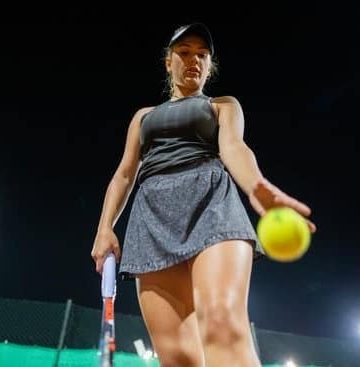
The most successful and popular players in men’s and women’s tennis have been able to secure significant sponsorship deals as a result. However, it is important to keep in mind that the sponsorship landscape in tennis can be highly dynamic, and the amount of sponsorship money a player receives can fluctuate over time. While top players can earn significant amounts from sponsorships and other sources of income, players ranked outside the top 20 or 30 often struggle to make ends meet, many are simply breaking even or even losing money. That’s an old problem though, new issues are emerging.
The sport also faces challenges, including a lack of clear leadership, financial instability within the International Tennis Federation and the four Grand Slam tournaments, and the dominance of a small number of top players who secure the majority of sponsorships and funds. Some people have said that the sport could be easily changed by new players, like how LIV Golf has tried to compete with the PGA Tour. They’ve even gone as far as to create a $25 million dollar player fund, but with no clear direction on what to do with money it’s hard to see how they’ll solve their issues without a significant amount of changes being made to the overall structure of the sport.
The Current Ranking System in Pro Tennis Values Consistency Over Skill.
While a select few professional tennis players have achieved great success and secured lucrative sponsorship deals, the reality for most players is much different. In today’s competitive environment, it is increasingly difficult for any one player to dominate the sport for an extended period of time. Even the top-ranked players have off days and must contend with the demanding schedules of the WTA and ATP tours. As a result the sport as a whole struggles to bring in consistent viewership for large audiences. However, if the sport were to broaden its range of top players – providing a more diverse array of role models for aspiring young athletes to emulate – it may find itself in a more favorable position. With a greater number of players at the top of the game, tennis would capture the attention of a wider audience and inspire new fans.
There are a few potential ways that the distribution of sponsorship money in tennis could be more evenly distributed among top players, such as placing a greater emphasis on a player’s on-court performance or marketability, increasing the number of sponsorship opportunities available, or making changes to the policies and practices of the governing bodies like the ITF, ATP, and WTA.
However, it is worth considering whether these approaches are truly effective in addressing the broader issue of unequal distribution of sponsorship money in the sport. Perhaps a more radical solution, such as starting a completely new league with a greater focus on elevating all players to the highest level of sponsorship and pay, could be the key to promoting greater parity in the sport. Such a league could potentially disrupt the existing power dynamics and provide new opportunities for players to succeed and be fairly compensated for their efforts. As the Women’s Tennis Association (WTA) and the Association of Tennis Professionals (ATP) struggle to unite.
It is worth considering the potential challenges and consequences of such a merger.

Obviously the entire situation has changed. The WTA has since abandoned their plans to host the Finals in China and the $50 million deferred income obligation (again which is recorded as a loss until it’s fulfilled) has been replaced with a $150 million deal from CVC Capital Partners which I imagine will be recorded over the next 3 years as deferred income, effectively buying them 3 years to find a suitable replacement for China or to possibly mend whatever it was that broke that deal up. Whether it was the unsatisfactory resolution to the Peng Shuai situation or simply because China backed out we’ll never really know.
It is undeniable that the men’s tennis league generates significantly more revenue and media attention than the women’s league. Even the most successful female players struggle to receive as much coverage as their male counterparts, unless they engage in activities beyond the sport that draw attention. In contrast, the men’s league operates at a profit, although the exact amount is difficult to determine given that it is organized as a charitable organization. What is clear is that the women’s league has required multiple financial bailouts and has struggled to sustain itself without significant infusions of cash.
These points highlight the ongoing disparities and challenges facing the women’s tennis league.

In the competitive world of professional tennis, it is not uncommon for players to prioritize financial success alongside ranking points. Some of the sport’s top players, such as Serena Williams and Roger Federer, have accumulated significant wealth over the course of their careers. For these players, the millions they earn in prize money may seem insignificant compared to what they’ve seen others earn in sponsorships. Until this money is distributed from within the league players will always go outside the league to make more money, and with the way things are going it almost seems like the leagues are encouraging their players to participate in exhibitions and seek outside sponsorships.

